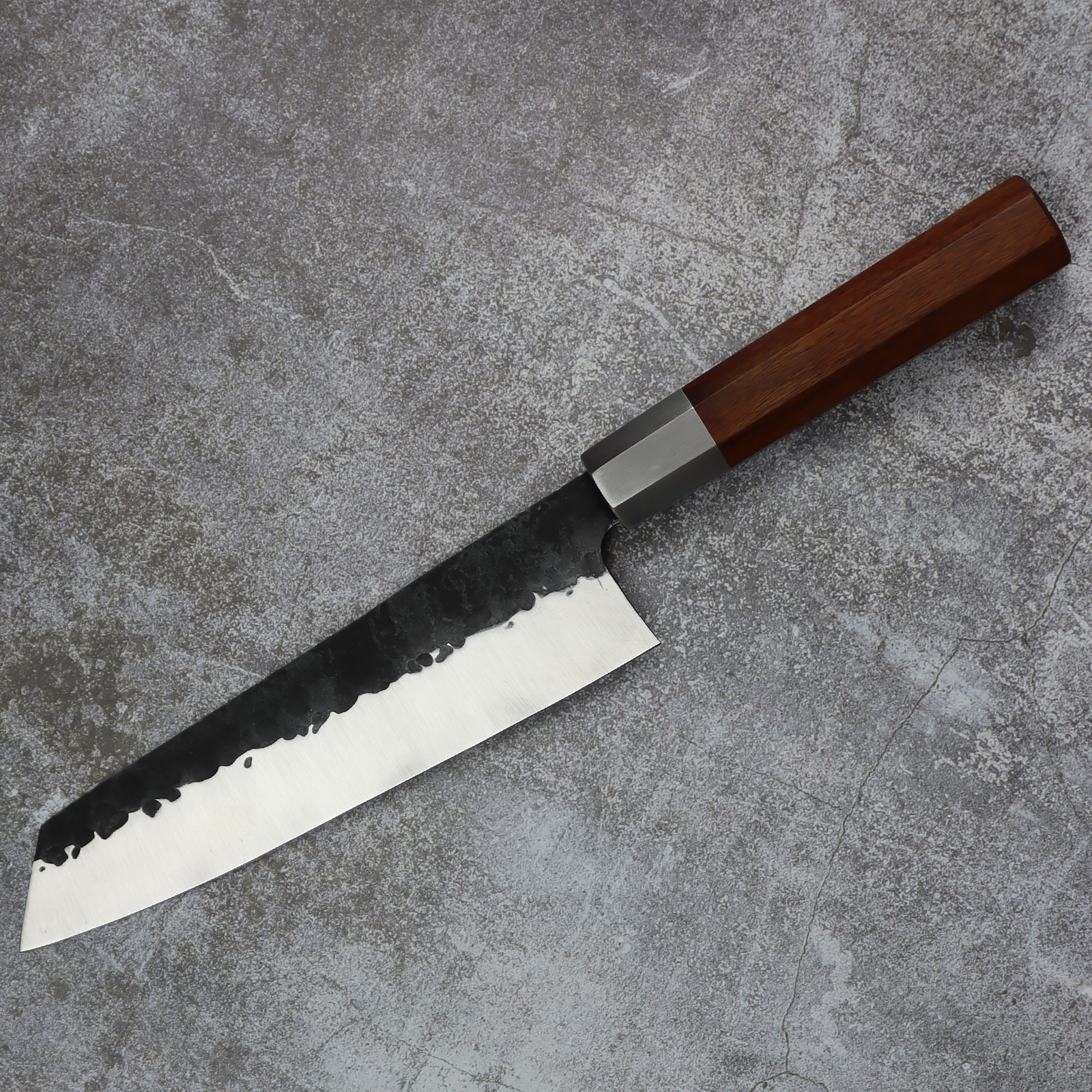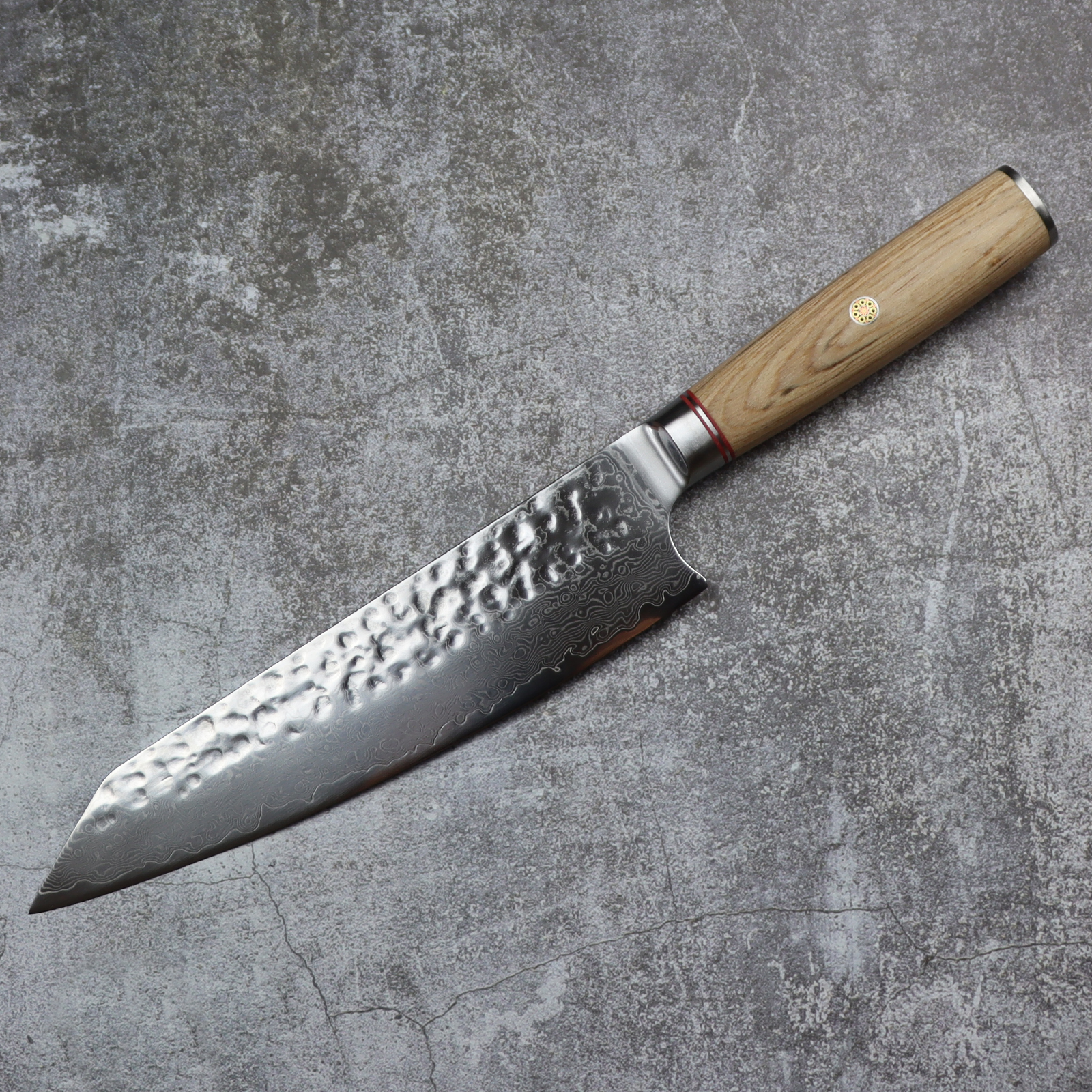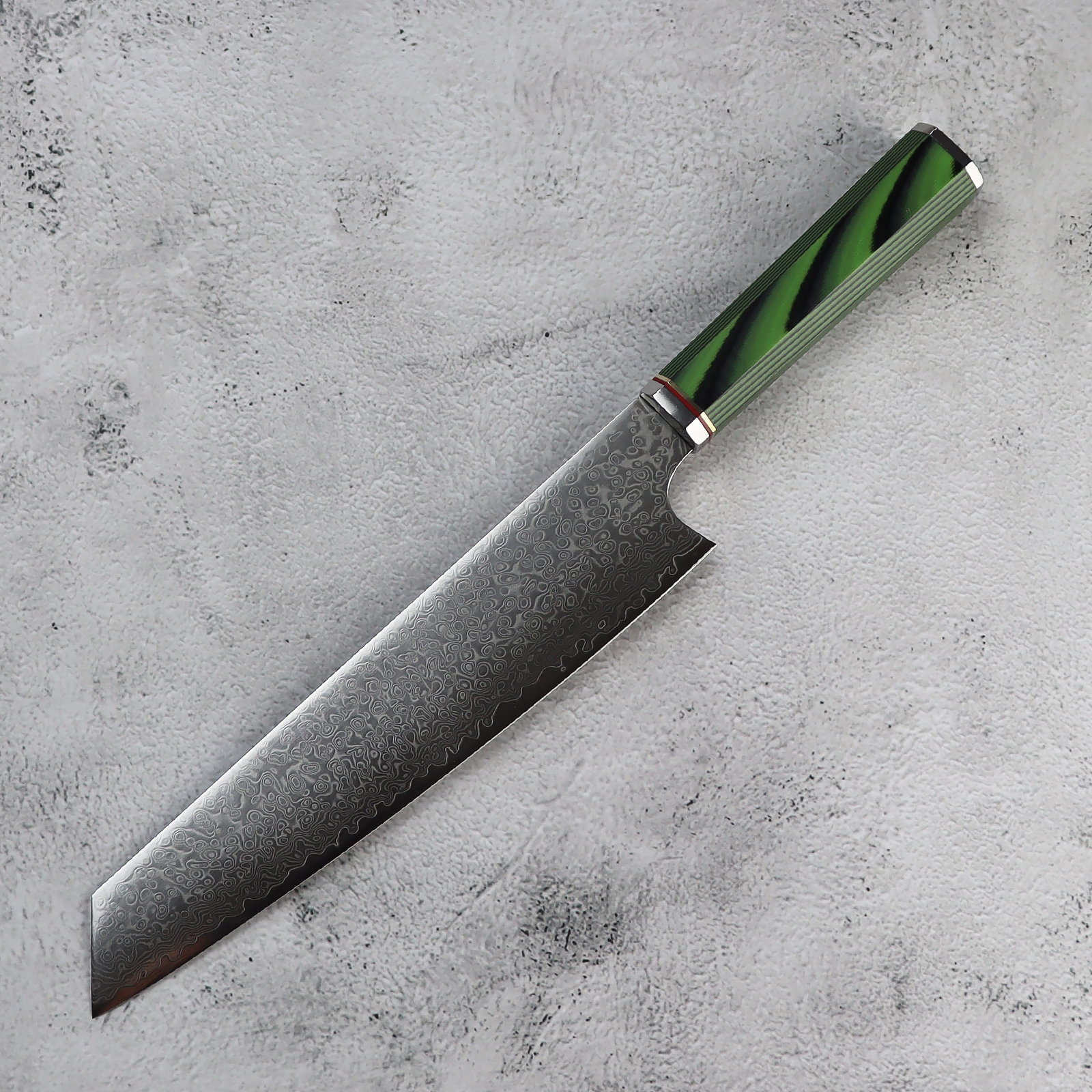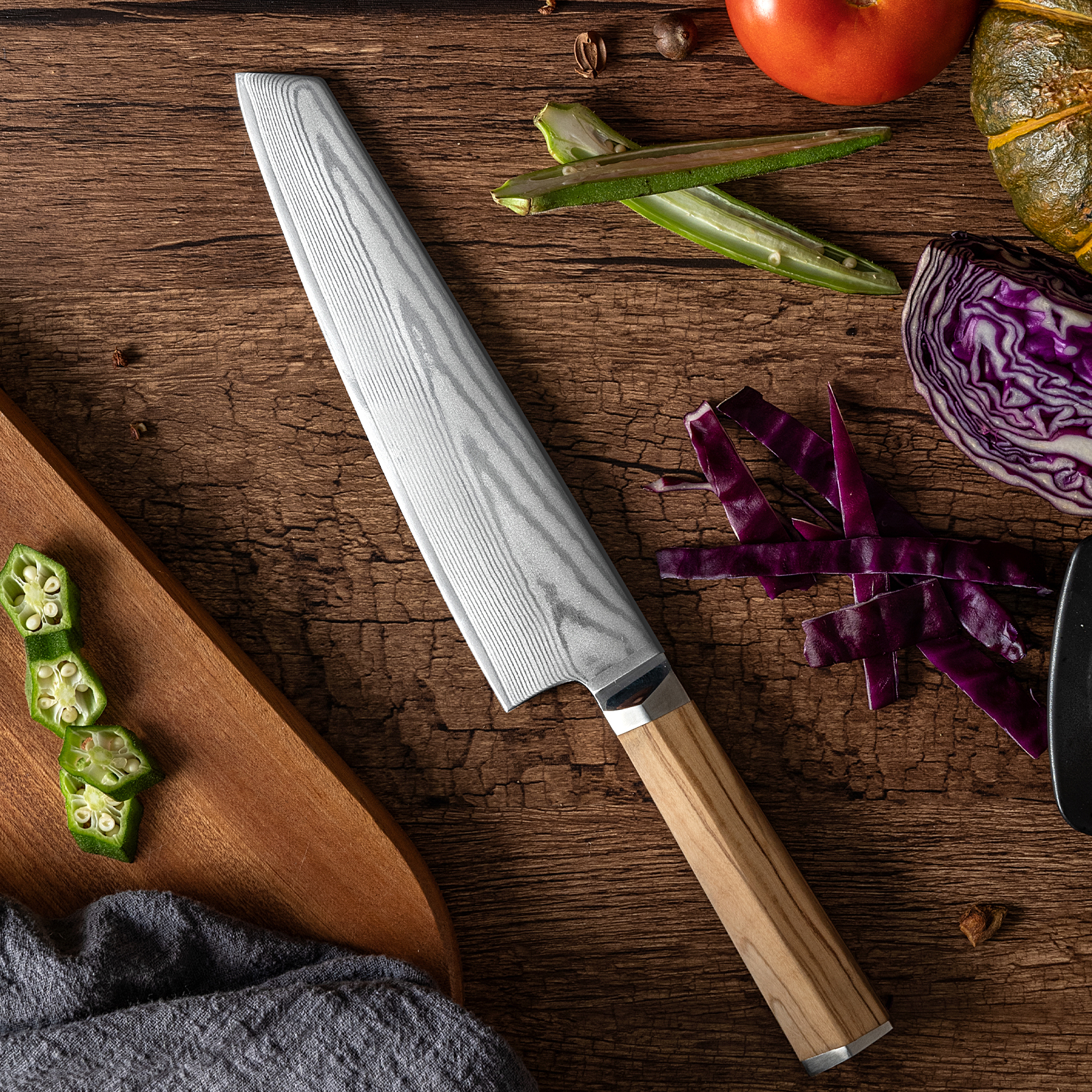The "kiritsuke knife" is the Japanese version of the traditional western chef's knife, originally used specifically for cutting large pieces of beef, hence the name "kiritsuke knife". The Kiritsuke knife is a multi-purpose cooking knife suitable for cutting most types of meat, fish, vegetables, fruits, and spices.
Compared with the classic chef's knife, the blade of the kiritsuke knife is less curved, lighter, thinner, and sharper. At the same time, the kiritsuke knife has a longer blade, and the standard size is about 8-12 inches.
_1728x.jpeg?w=1600&h=1600)
Features of Kiritsuke Knife
- Longer blade can cut longer ingredients
- Thinner, harder blade
- Curved blade for "rocking" cuts
- Sharp tip helps to get into tighter places, flexible, and smooth
Are There Different Types of Kiritsuke Knives?
There are two main types: the standard Kiritsuke, which combines elements of a Yanagiba and Usuba with its longer, straighter blade, and the Kiritsuke Gyuto, which is essentially a Gyuto with the pointed tip of a Kiritsuke. The Kiritsuke Gyuto is often more versatile and user-friendly, making it a popular choice among chefs who appreciate the aesthetic of the Kiritsuke but require the functionality of a chef's knife.
Kiritsuke VS Santoku VS Gyuto
The Kiritsuke is often seen as a more specialized knife when compared to the Santoku and Gyuto. The Gyuto is very versatile with a slightly curved edge that accommodates rocking motions, making it suitable for a wide range of tasks. The Santoku, with its shorter blade and more pronounced sheep's foot tip, is excellent for slicing, dicing, and mincing but lacks the length for larger tasks. The Kiritsuke, with its unique profile, offers a blend of slicing precision and a long blade, but it might not be as versatile for all-around kitchen tasks as the Gyuto or as user-friendly as the Santoku for smaller tasks.

Can Beginners Use a Kiritsuke Knife?
While a Kiritsuke knife can be used by beginners, its unique shape and sharpness might require a learning curve. Its flat profile and length demand precise control and technique, especially for tasks like slicing fish or vegetables. Beginners might find it more challenging than using a chef's knife.
How to Choose a Kiritsuke Knife?
When selecting a Kiritsuke knife, consider the following factors:
1. Material
Kiritsuke knives can be made from various steels, including stainless steel, carbon steel, and Damascus steel. Carbon steel holds a sharper edge but requires more maintenance to prevent rust, while stainless steel knives are made from an iron alloy that includes chromium, which makes them resistant to rust and corrosion. But stainless steel is more softer than carbon steel, meaning stainless steel knives may need more frequent sharpening. Damascus steel isn't a type of steel but rather a technique of layering steel to create strong, resilient blades. Damascus steel knives can hold an edge well, combining the benefits of carbon and stainless steels.
2. Handle Type
The traditional Japanese handle (Wa-handle) is common, but some prefer a Western-style handle. The choice is mainly based on the ergonomics and aesthetics of the handle.
3. Blade Length
Choose a length that feels comfortable for you and suits the size of the food you typically prepare. A longer knife can handle larger tasks, but it may be more challenging to maneuver. Currently, 8-inch blade is the mainstream in the market.
How to Care for a Kiritsuke Knife?
Proper care is essential to maintain the performance and longevity of your Kiritsuke knife.
1. Sharpening
Use a whetstone to sharpen your knife, maintaining the correct angle for the blade's edge. The sharpening angle should be between 15 to 20 degrees. It's recommended to sharpen regularly based on use but avoid over-sharpening.
2. Cleaning
Hand wash your knife with mild detergent and dry it immediately to prevent rust, especially if it's made of carbon steel.
3. Storage
Store the knife in a wooden block, on a magnetic knife strip, or in a sheath to protect the blade.
The Kiritsuke knife is a remarkable tool that bridges tradition and versatility, embodying the craftsmanship and precision of Japanese culinary culture. While it may present a learning curve, its mastery can elevate the cooking experience, offering precision and efficiency in a wide range of tasks.
WHY BUY FROM FZKALY?
We deliver premium on-trend kitchen knives and knife accessories at competitive prices with great customer service for cooking enthusiasts, whether you are a pro chef or an amateur chef, or a trainee in cooking school.
At Fzkaly, we believe that the right kitchen knives can help you tap into your potential in cooking and feel your best every day.



-1.jpeg?w=1600&h=1600)
.jpeg?w=1600&h=1600)

